|
March 1956 |
By end of March 1956, AUI has acquired purchase options, running for one year, covering 6,200 acres in the Green Bank valley. Total purchase price called for by options is $502,000. |
|
9 August 1956 |
West Virginia Radio Astronomy Zoning Act becomes first legislation in the world intended specifically to protect basic research. |
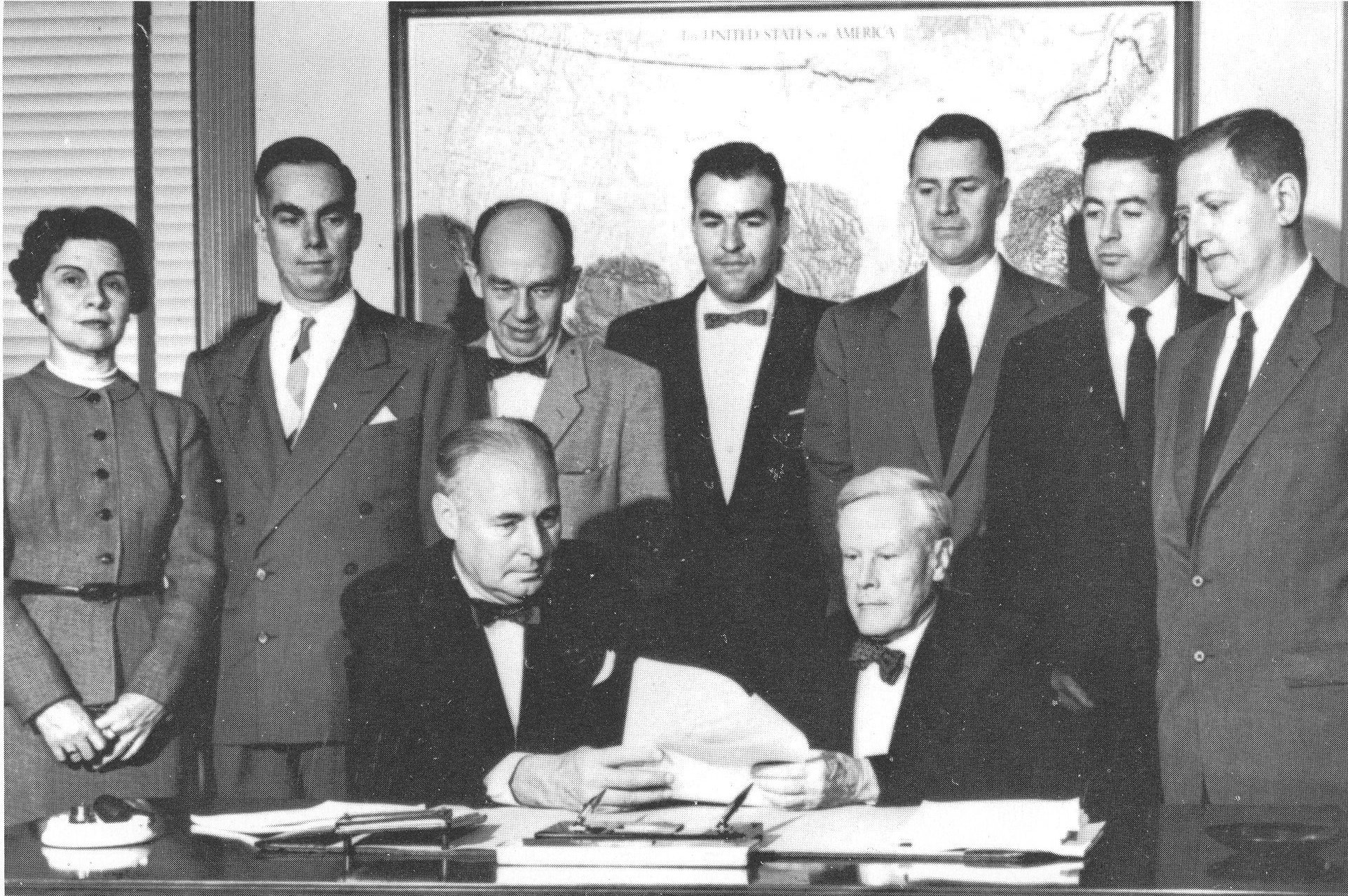 |
17 November 1956 |
Alan Waterman, Director of the NSF, and Lloyd Berkner, President of AUI, sign the NSF/AUI agreement establishing NRAO with AUI as the managing agency; Berkner becomes Acting Director of the NRAO. |
|
14 May 1957 |
Offices open on Green Bank site with move of temporary AUI office from Marlinton, WV. |
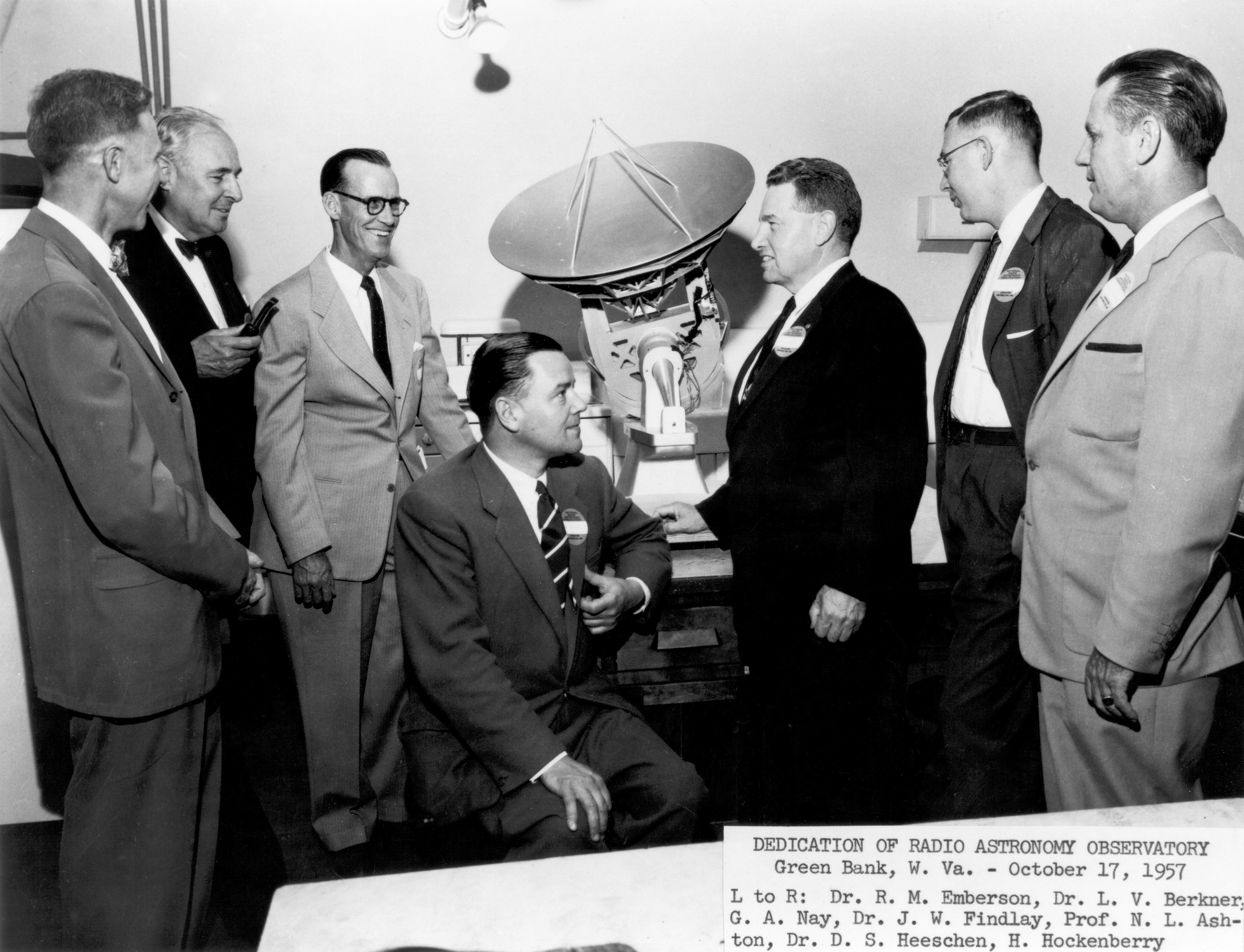 |
17 October 1957 |
Dedication of Observatory in Green Bank. |
|
Summer 1958 |
12 Foot antenna begins observations. Construction begins on 85 Foot Telescope and Calibration Horn Antenna, and on the works area building. |
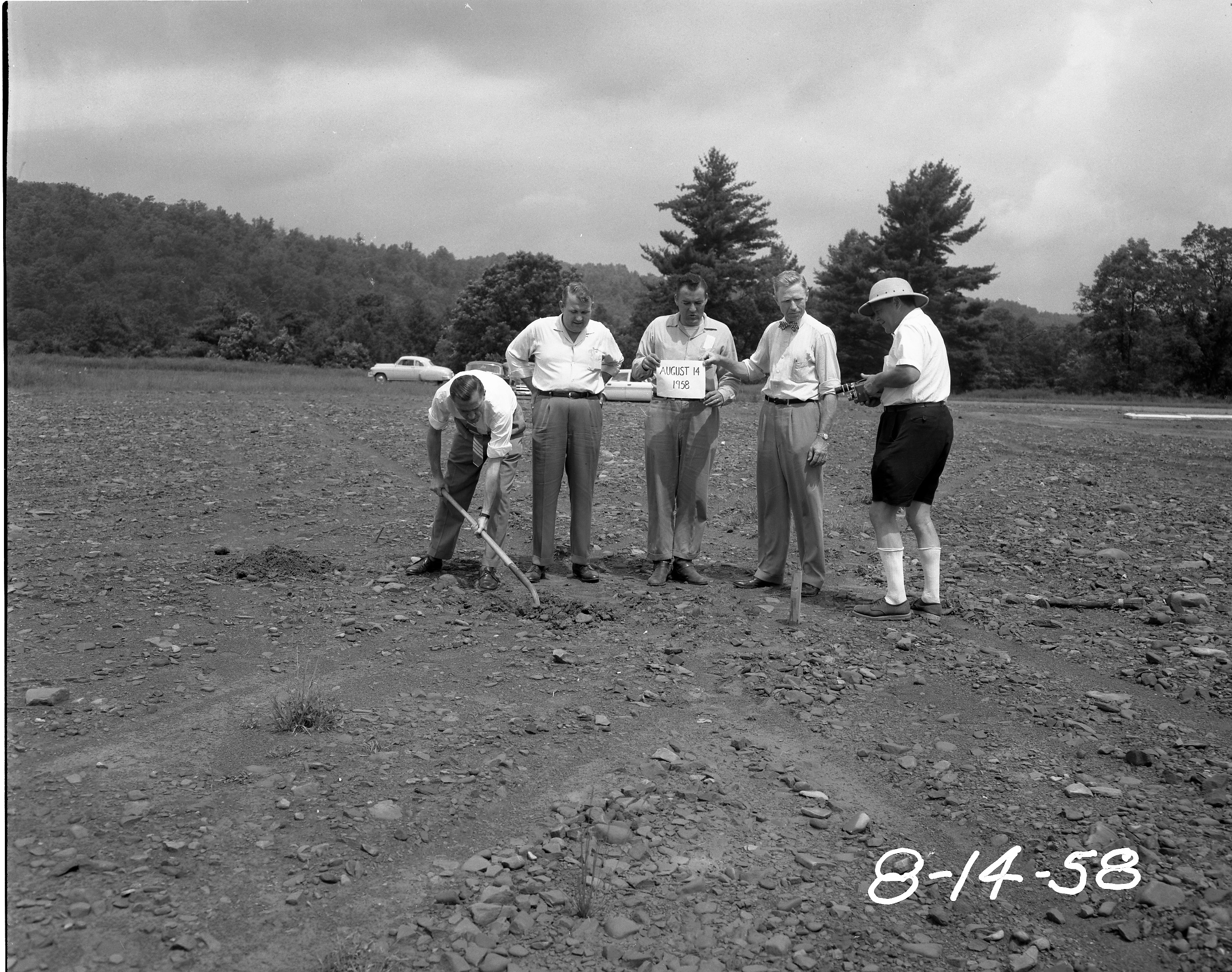 |
14 August 1958 |
Groundbreaking for the 140 Foot Telescope. |
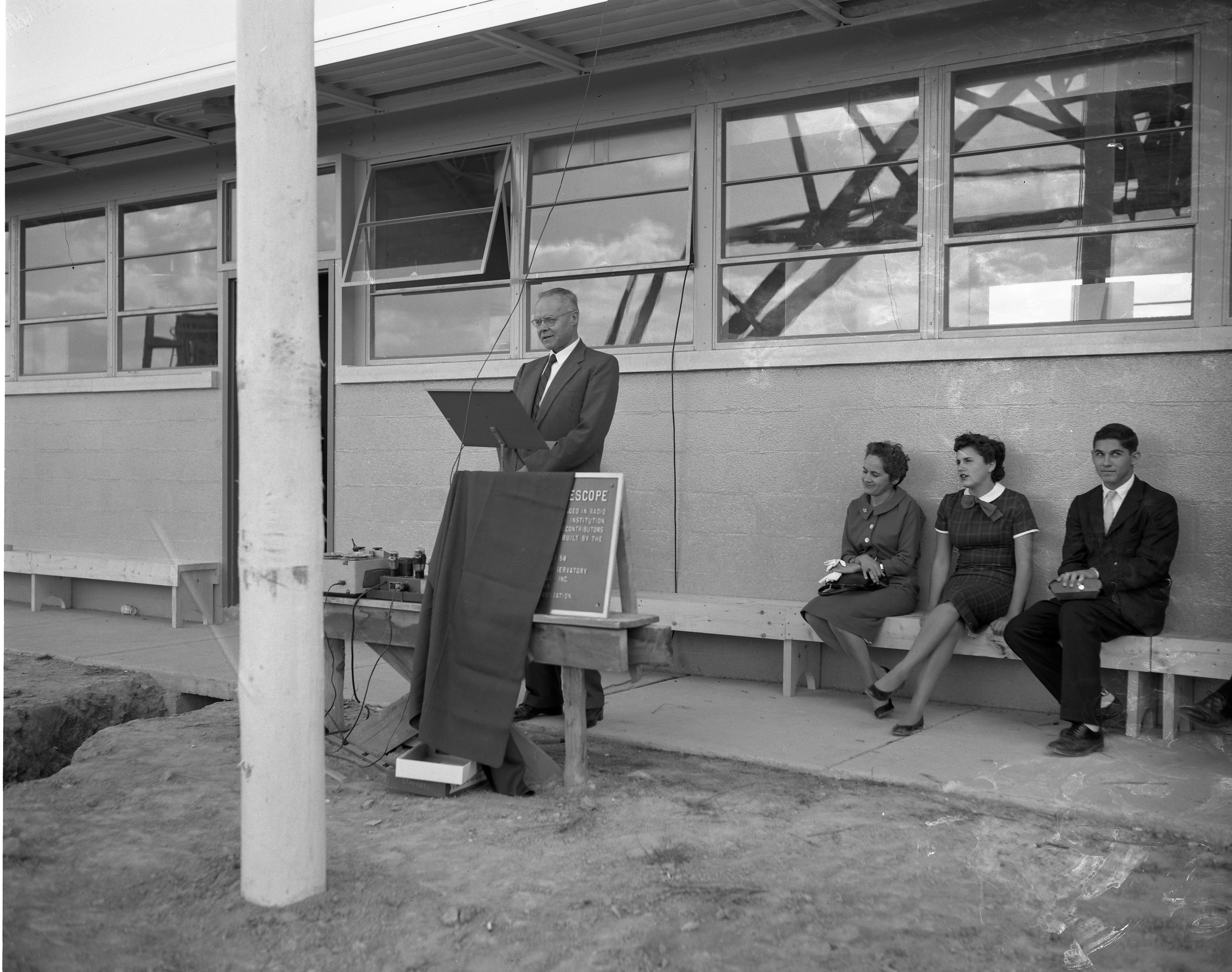 |
16 October 1958 |
Dedication of the Howard E. Tatel 85 Foot Telescope. |
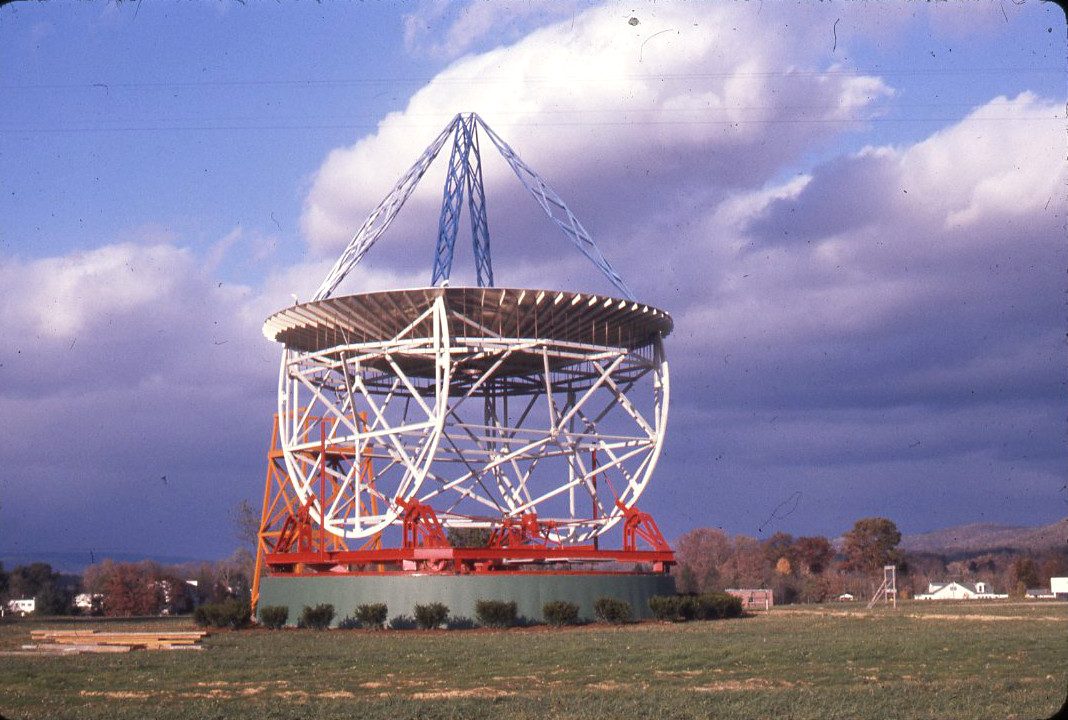 |
16 October 1958 |
Grote Reber arrives in Green Bank to oversee reassembly of his Wheaton antenna at the entrance to the Green Bank site. |
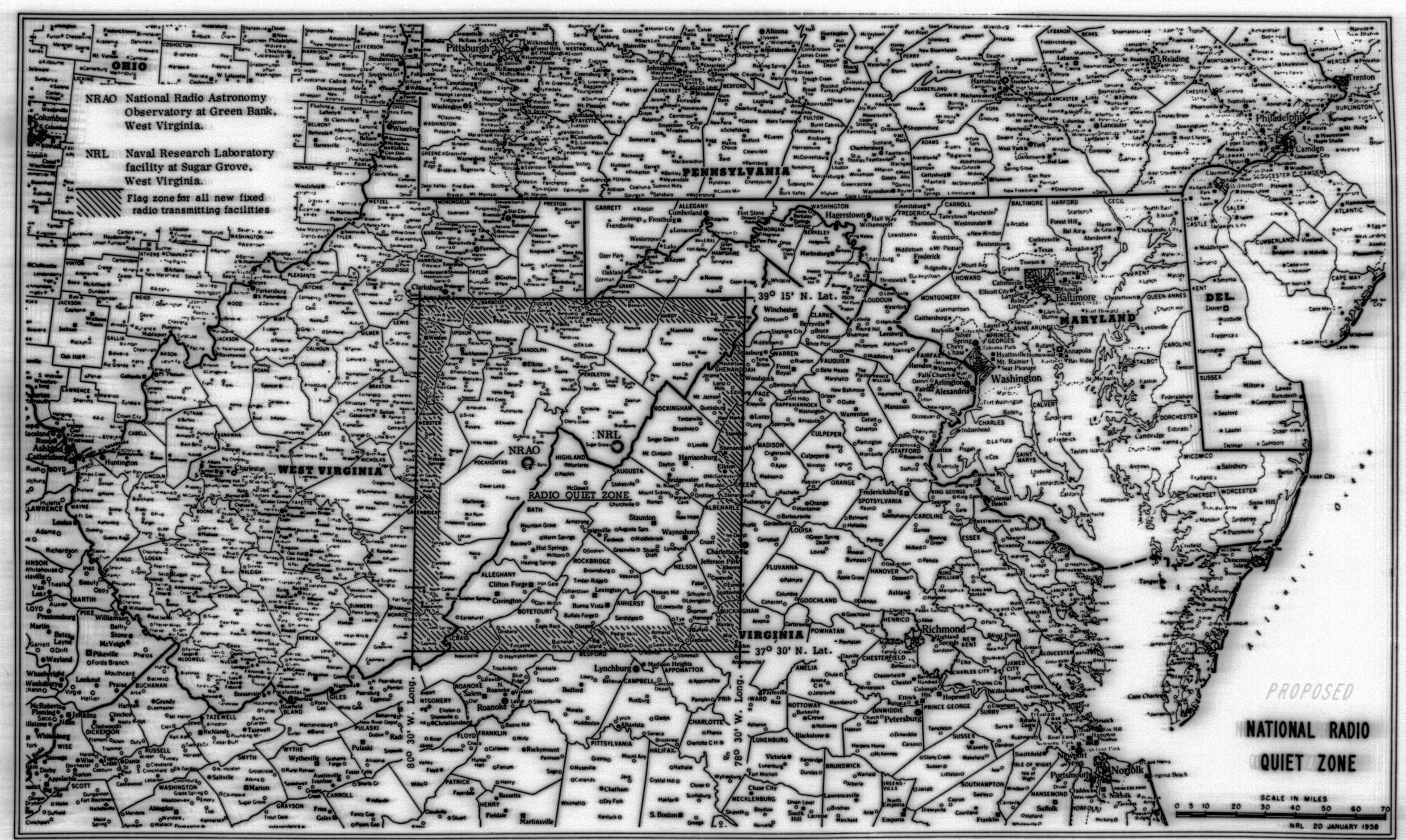 |
19 November 1958 |
The National Radio Quiet Zone (NRQZ) was established by the Federal Communications Commission to minimize possible harmful interference to the NRAO in Green Bank, WV and to the radio receiving facilities for the US Navy in Sugar Grove, WV. |
|
Summer 1959 |
First NRAO summer student program. |
|
July 1959 |
Works area building occupied, the first completed new building on the Green Bank site. |
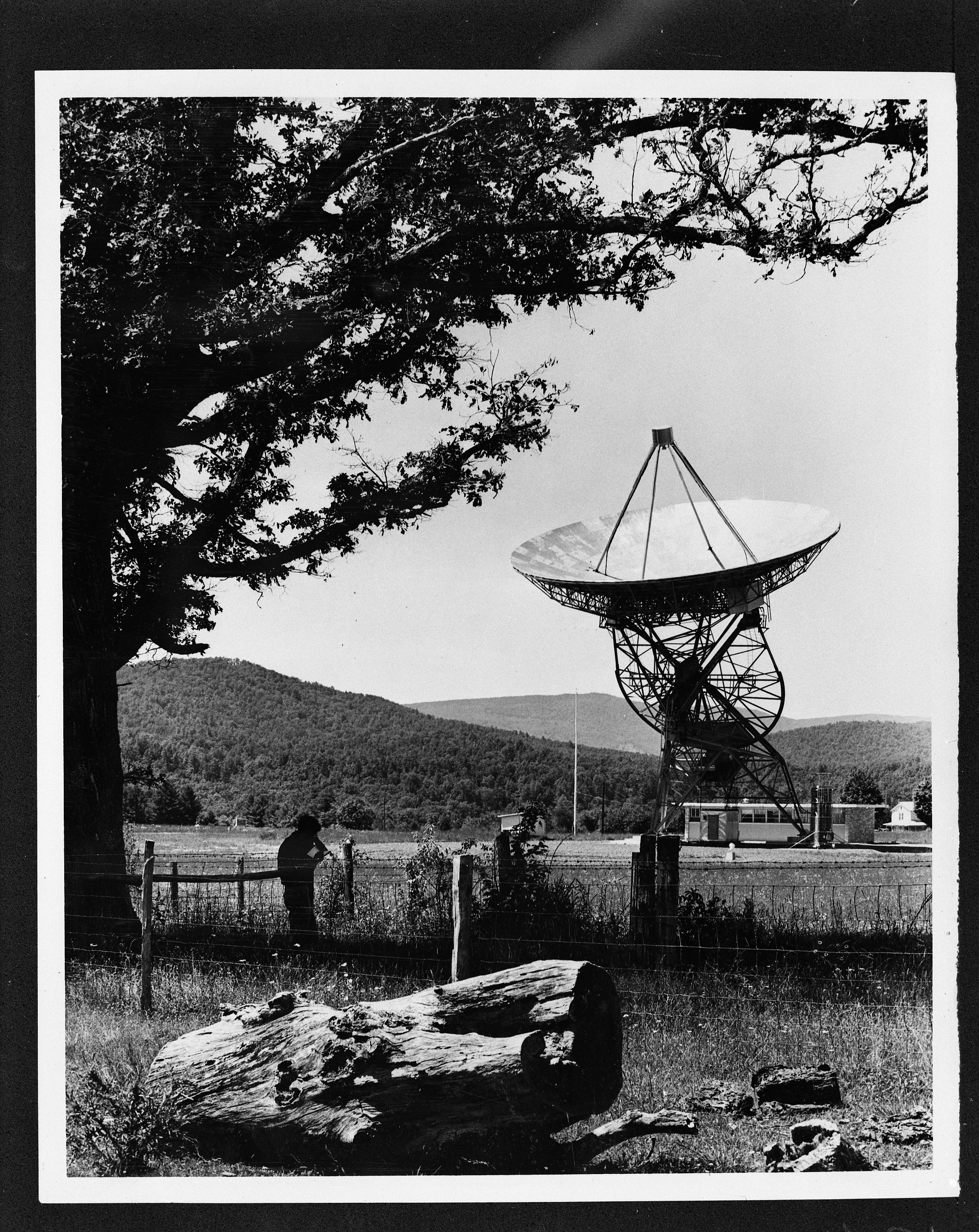 |
13 February 1959 |
First observations with Tatel 85 Foot Telescope. |
|
1 July 1959 |
Otto Struve becomes first NRAO Director. |
|
October 1959 |
Residence Hall and Jansky Laboratory buildings completed and occupied in Green Bank. First observations made with the Calibration Horn Antenna. |
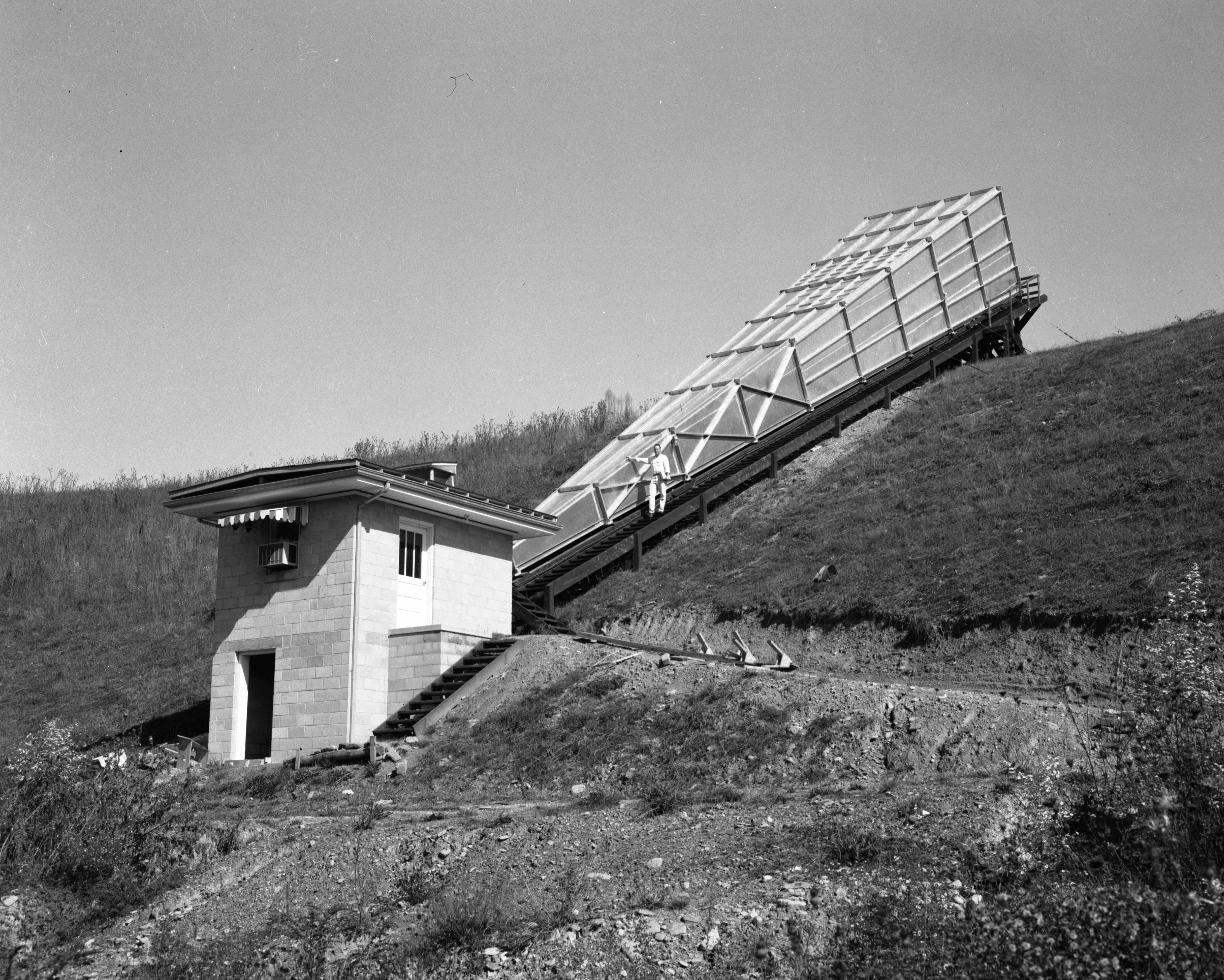 |
March 1960 |
Absolute flux measurements of Cas A begin with Calibration Horn Antenna. |
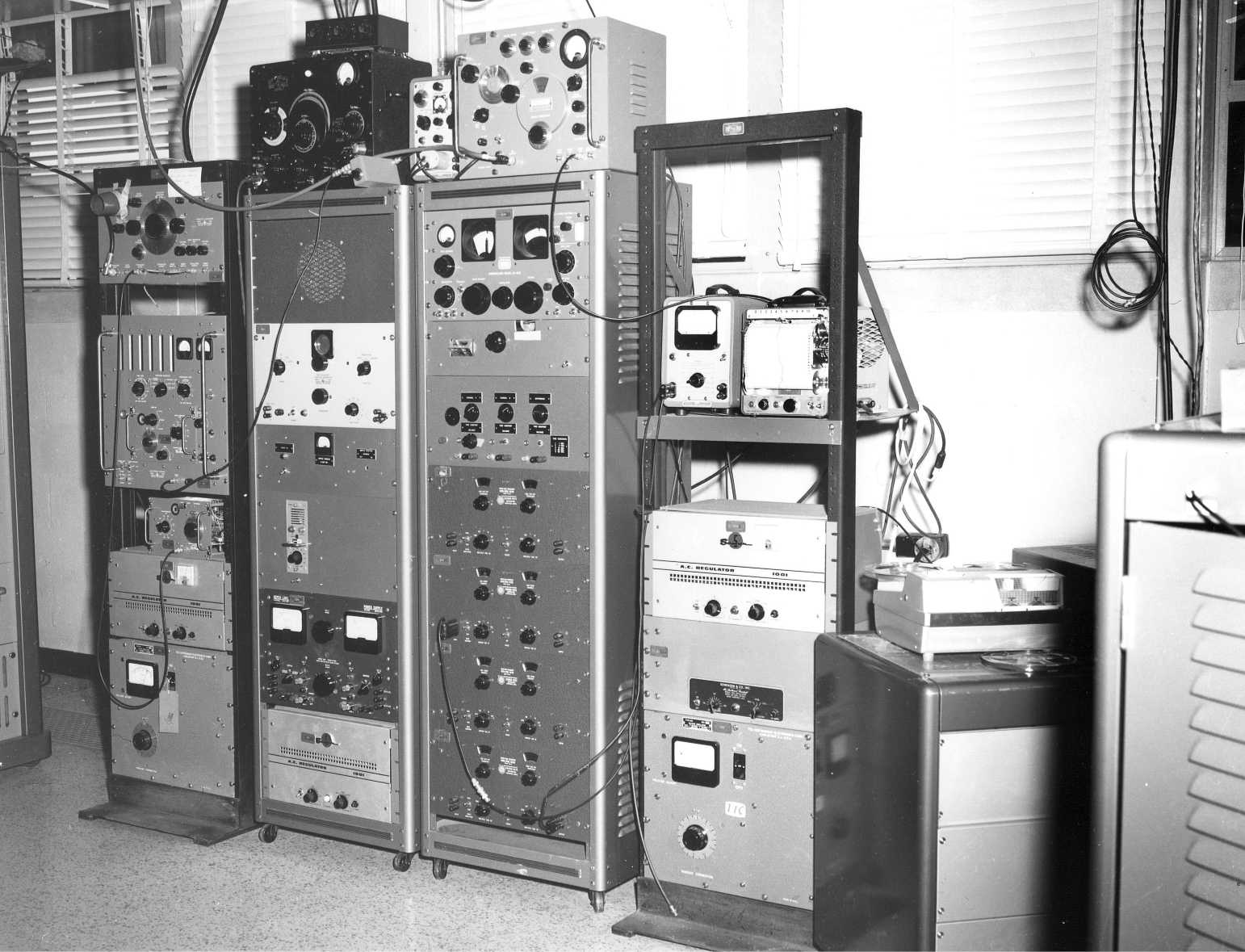 |
11 April 1960 |
First observations for Project OZMA. |
|
October 1960 |
300 foot transit telescope concept chosen. |
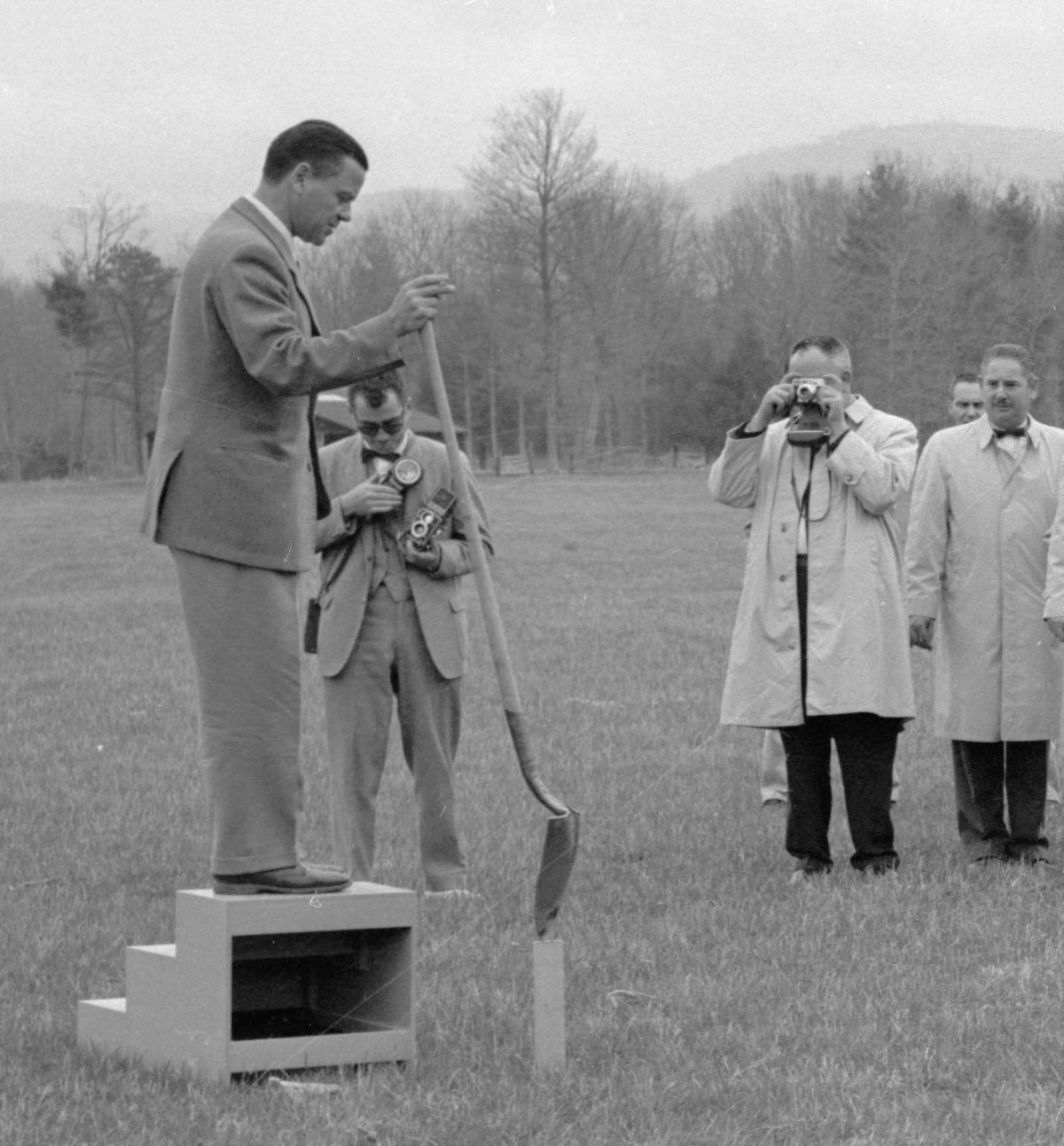 |
27 April 1961 |
Groundbreaking for 300 Foot Telescope. |
|
1 December 1961 |
Otto Struve resigns as Director. David S. Heeschen becomes Acting Director. |
|
17 December 1961 |
J.L. Pawsey appointed as Director, effective 1 October 1962; because of ill health he is unable to take up the position and dies on 30 November 1962. |
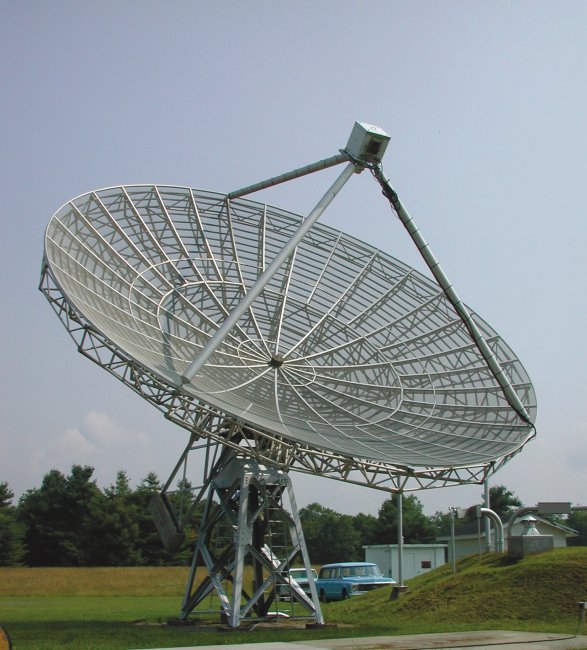 |
March 1962 |
Observations begin with 40 Foot Telescope. |
|
21 September 1962 |
Test observations begin with 300 Foot Telescope. |
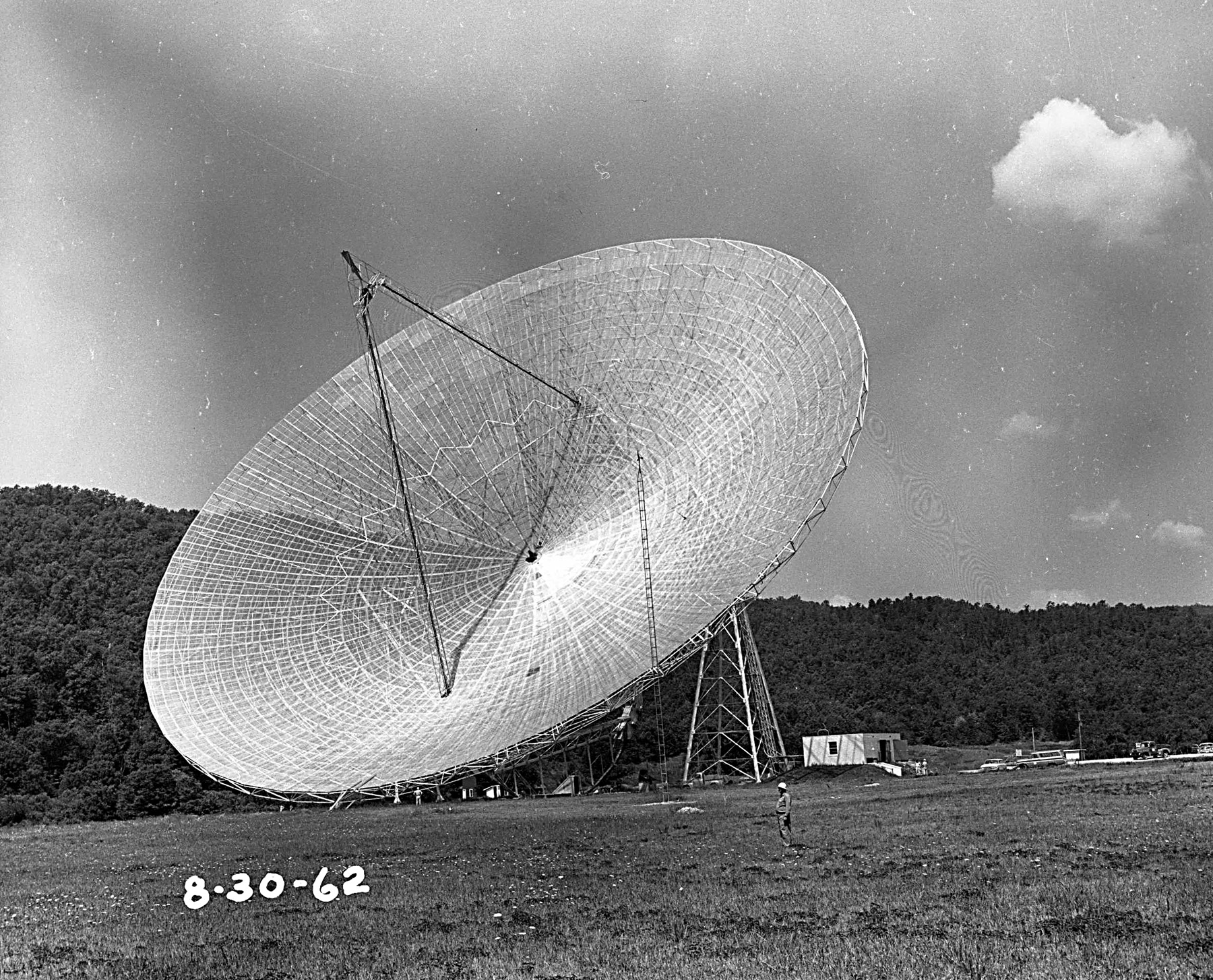 |
1 October 1962 |
300 Foot Telescope operational with continuum receivers for 750 and 1400 mc. |
|
19 October 1962 |
David S. Heeschen becomes Director. |
|
1962 |
Beginning of millimeter-wave radio astronomy at NRAO: Funding request for a telescope of ~30 feet in diameter made in 1962; request approved by NSF for inclusion in FY1964 budget. |
|
1963 |
First digital autocorrelator built; used on 85 Foot Tatel Telescope. |
|
1963 |
Panel on Astronomical Facilities of National Academy of Sciences (NAS), headed by A.E. Whitford, meets with D.S. Heeschen. |
|
February 1964 |
Completion of 85-2 construction (cabling to connect 85-1 and 85-2 still to be done by NRAO). |
|
1 June 1964 |
First observations with 2-element interferometer, fringes observed on 3C 273. |
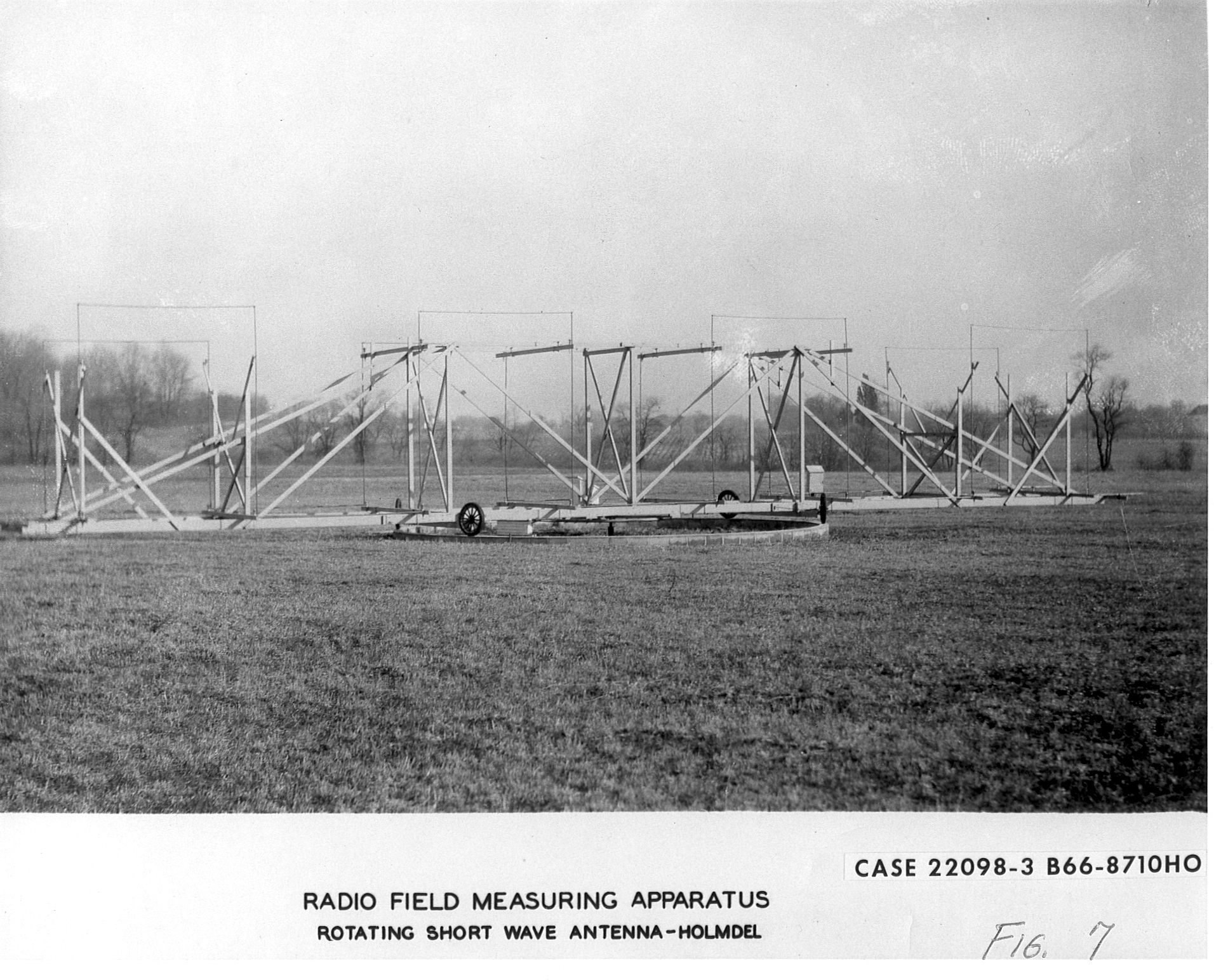 |
June 1964 |
Construction of Jansky antenna replica at entrance to Green Bank site completed. |
|
2 December 1964 |
Excavation for new Charlottesville building begins. |
|
1964 |
Ground-Based Astronomy: A Ten-Year Program report prepared by the Panel on Astronomical Facilities (Whitford Panel) for the Committee on Science and Public Policy of the NAS recommends what becomes the VLA: "A very large high-resolution pencil-beam array with low sidelobes to be constructed as a national facility." |
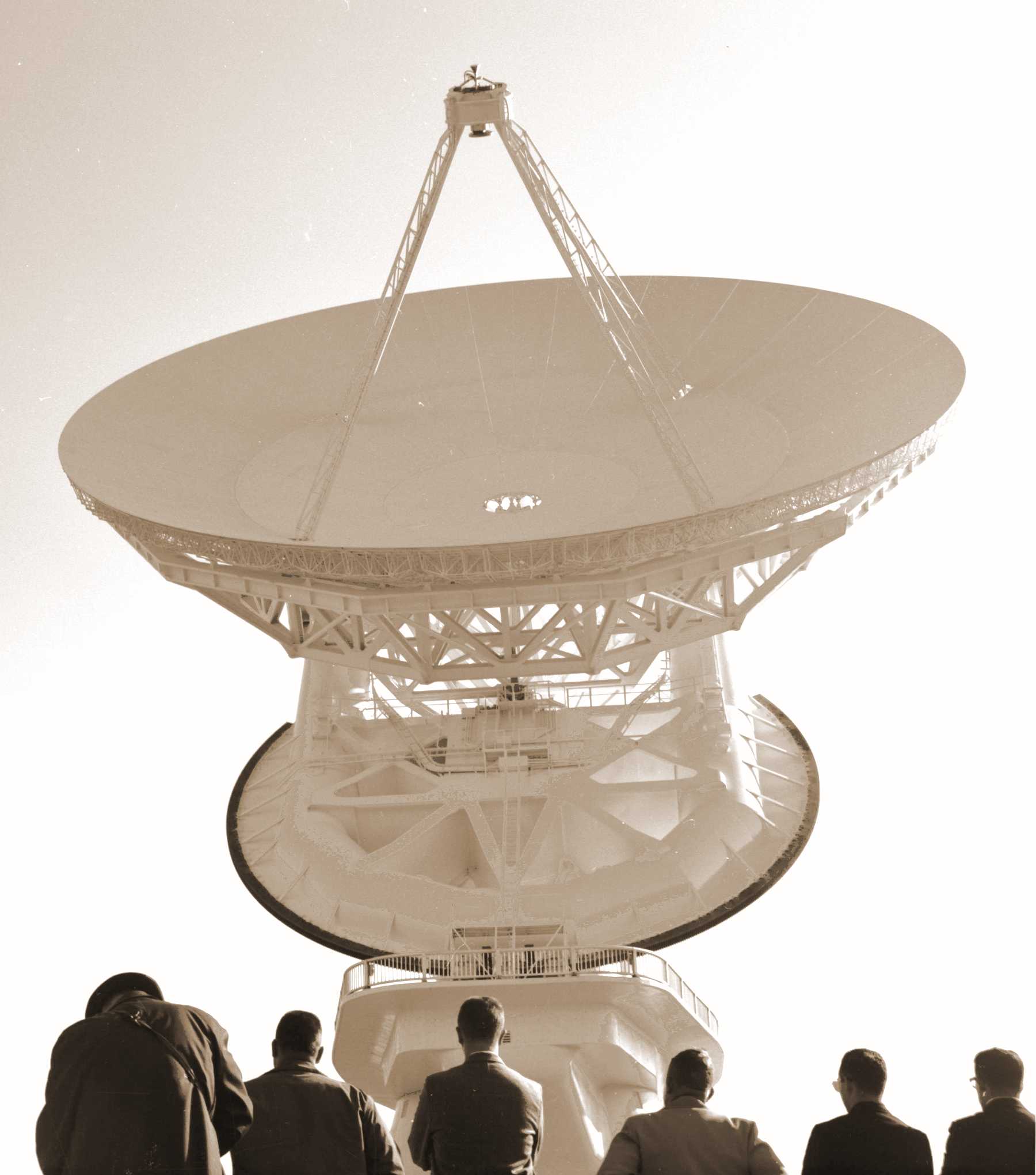 |
February 1965 |
140 Foot Telescope construction completed. |
|
11 February 1965 |
NSF gives final approval to locate 36 Foot Telescope on Kitt Peak. |
|
23 May 1965 |
First observations with 140 Foot Telescope made by S. von Hoerner, measuring occultations of radio sources by the moon at 234, 256 and 405 Mc. |
|
June 1965 |
Foundation on Kitt Peak completed for 36 Foot Telescope. |
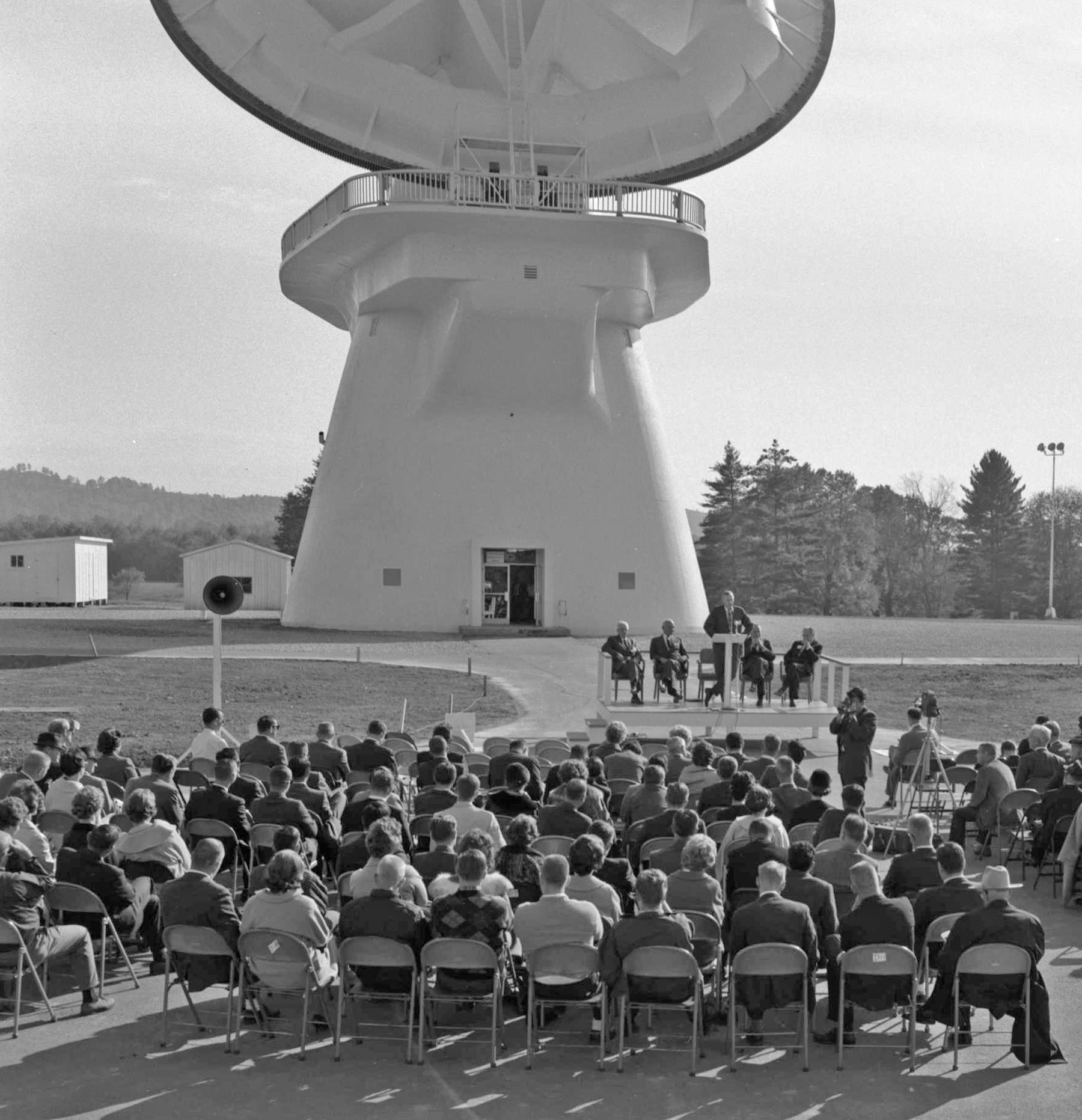 |
13 October 1965 |
Dedication of 140 Foot Telescope in Green Bank. |
|
20 December 1965 |
NRAO takes occupancy of new building in Charlottesville. By the end of January 1966 the Director's office, library and part of the scientific staff will have transferred from Green Bank. |